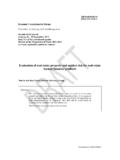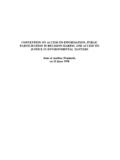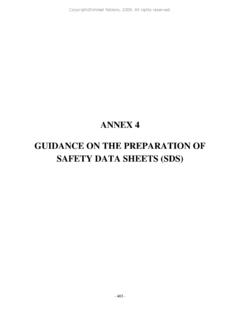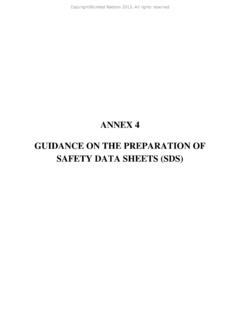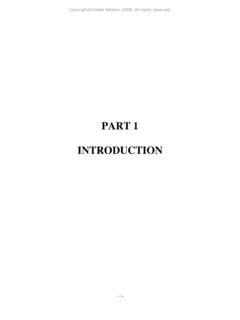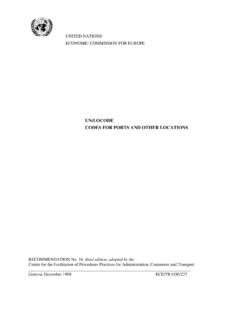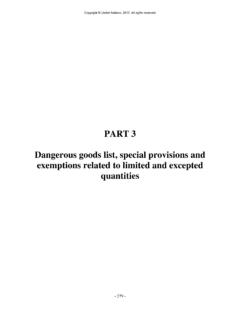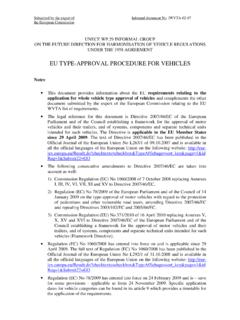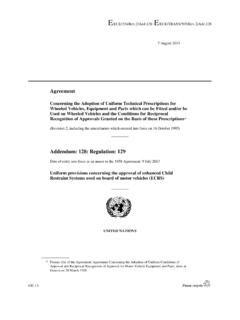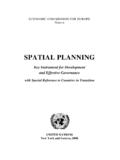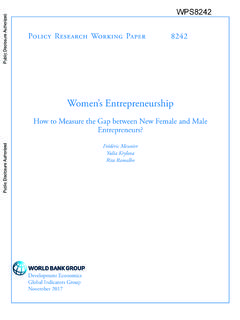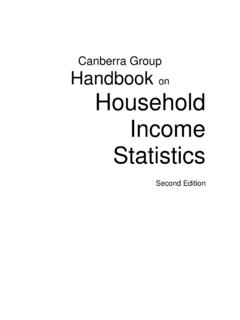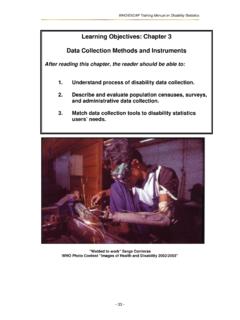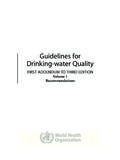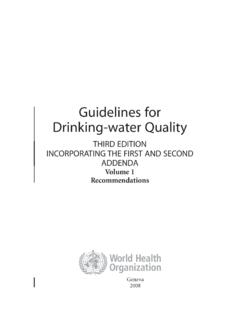Transcription of for exchanging data to improve emigration statistics
1 For exchanging datato improvestatisticsGuidelinesemigrationUNI TED NATIONSP repared by the Task Force on measuring EmigrationUsing data Collected by the Receiving CountryUnited Nations Economic Commission for EuropeStatistical Office of the European Union (EUROSTAT) UNITED NATIONS ECONOMIC COMMISSION FOR EUROPE STATISTICAL OFFICE OF THE EUROPEAN UNION guidelines for exchanging data to improve emigration statistics Prepared by the Task Force on measuring emigration Using data Collected by the Receiving Country UNITED NATIONS Geneva, 2010 Preface The joint United Nations Economic Commission for Europe (UNECE) / Statistical Office of the European Union (Eurostat)
2 Task Force on measuring emigration Using data Collected by the Receiving Country was set up in 2005 by the Bureau of the Conference of European Statisticians to improve the use of harmonized concepts and definitions of migrants, and to develop guidelines on how to measure emigration through data on stocks and flows in host countries. The guidelines for exchanging data to improve emigration statistics are the main output of the work of the Task Force. They were discussed at the 2006 and 2008 UNECE/Eurostat Work Sessions on Migration statistics , and endorsed by the Conference of European Statisticians at their June 2009 meeting, with the provisional title guidelines on the Use and Dissemination of data on International Immigration to Facilitate their Use to improve emigration data of Sending Countries.
3 The guidelines were prepared by the following members of the Task Force (in alphabetical order): Enrico Bisogno, UNECE Marcel Heiniger, Switzerland Anne Herm, Estonia Margaret Michalowski, statistics Canada (chair of the Task Force) David Thorogood, Eurostat The guidelines are based on the results of a data exchange exercise organised by the Task Force in 2006, with the contribution of the following experts: Albania: Emira Galanxhi Australia: Garth Bode and Patrick Corr Canada: Margaret Michalowski Czech Republic: Bohdana Hola Estonia: Anne Herm Finland: Matti Saari France: Catherine Borrel and Jacqueline Perrin-Haynes Georgia: Alexander Vadachkoria Italy: Domenico Gabrielli, Costanza Giovannelli, and Enrico Tucci Kazakhstan: Yerbolat Mussabek Norway: Lars Ostby, Paul Inge Severeide, Halvor Stromme and K re Vassenden Poland: Zofia Kostrzewa and Dorota Szaltys Portugal: Joao Peixoto and Claudia Pina Russian Federation: Olga Chudinovskikh, Liudmila Eroshina, Marina Rakhmaninova Spain: Milagros Garc a and Alicia Padilla Gomez Switzerland.
4 Werner Haug and Marcel Heiniger The Former Yugoslav Republic of Macedonia: Bojkica Markovska United Kingdom: Emma Wright United States: Kevin Deardorff The report of this data exchange exercise is presented in Annex B. Table of contents 1. 7 2. Different needs for emigration data and various typologies of 9 3. National data sources on 12 4. Using other countries' immigration data to improve emigration 14 5. Improving availability, quality and accessibility of data on international immigration to improve emigration estimates of sending 23 6.
5 30 ANNEX A - Standardized tables for immigration data compilation and 31 ANNEX B Report on data exchange 34 guidelines for exchanging data to improve emigration statistics 1. Introduction International migration is the change of place of residence from one country to another. It consists of persons who leave a country in order to reside in another country. This movement affects the population of the two countries and should be recorded twice, once as immigration in the receiving country and once as emigration in the sending country.
6 However, there is a certain asymmetry between data availability on immigration and emigration , for two main reasons: (1) Departures tend to be less well recorded than arrivals as most governments are reluctant or unable to closely monitor the exit of persons from their territory, especially if the emigrants are national rather than foreign citizens. Moreover, people do not have much incentive to notify the authorities of their departure as there are no benefits to be gained. (2) It is difficult to count persons leaving the country from a statistical point of view because of their absence.
7 This applies to both flow and stock measurements. Censuses and sample surveys, which collect information on resident population, have obvious difficulties in counting absent persons, especially when no member of the household is living in the country of origin anymore. Taking into account these limitations, the present guidelines explore the possibility of compensating the weaknesses of emigration data in the sending country by using existing immigration data in the receiving country.
8 Countries usually have some immigration data , derived from administrative sources (population registers, aliens registers, registers of permits of stay, or data from border cards) or from population-based data collections, such as population censuses or household sample surveys. Immigration data collected by receiving countries may, however, have some limitations, due to definition, coverage or accuracy problems. Despite these problems, immigration statistics are generally considered more reliable as compared to emigration statistics for a given country.
9 This does not mean that for a given flow between two countries, the immigration figure from the receiving country is systematically more reliable than the emigration figure provided by the sending country. Nevertheless, it seems reasonable to conclude that for most countries, immigration statistics from receiving countries are a promising potential source of statistics on their emigration either to estimate missing data or to improve existing figures. The first objective of these guidelines is to provide guidance to those countries considering improving their emigration data by using immigration data of receiving countries.
10 For this reason, different information needs for emigration data are analysed and indications are provided on how to use properly other countries immigration data . Secondly, the attention of countries producing immigration data is drawn to the fact that countries of emigration are an important user of their data . Therefore, when producing immigration data , countries should pay attention to data collection, processing and dissemination so that their data can also better fit the information needs of such users. 7 guidelines for exchanging data to improve emigration statistics Thirdly, some suggestions are given to international organizations working in the field of data collection on international migration.
